Posted on September 4th, 2019 by Mary Lord
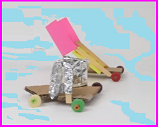 Elementary students learn about wind and kinetic and renewable energy while following the steps of the engineering design process to imagine, create, test, evaluate, and refine small, wind-powered sail cars built from limited quantities of drinking straws, masking tape, paper, and beads. Teams of two then compete to see which sail-car travels the farthest when pushed by the wind (simulated by the use of an electric fan).
Elementary students learn about wind and kinetic and renewable energy while following the steps of the engineering design process to imagine, create, test, evaluate, and refine small, wind-powered sail cars built from limited quantities of drinking straws, masking tape, paper, and beads. Teams of two then compete to see which sail-car travels the farthest when pushed by the wind (simulated by the use of an electric fan).
Note: This NGSS-aligned activity is part of a unit in which multiple activities are brought together for an all-day school/multi-school concluding “engineering field day” competition.
Read More
Filed under: Class Activities, Grades K-5, Lesson Plans | Comments Off on Wind-Powered Sail Cars
Tags: Class Activities, Competitions for Students, Engineering Design Process, Grades K-5, Lesson Plan, sail cars, teachengineering, wind power
Posted on August 31st, 2019 by Mary Lord
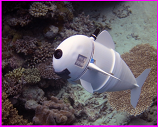 Middle school students take on the role of marine biologists to investigate how sharks move in three-dimensional space (3-D). Understanding the mathematics behind shark movement will inform the design of a prototype joystick for a robotic exploration shark used to collect oceanic data.
Middle school students take on the role of marine biologists to investigate how sharks move in three-dimensional space (3-D). Understanding the mathematics behind shark movement will inform the design of a prototype joystick for a robotic exploration shark used to collect oceanic data.
Read More
Filed under: Class Activities, Grades 6-8, Lesson Plans | Comments Off on Move Like a Shark
Tags: 3-D motion, Aeronautics, Cartesian coordinates, Class Activities, drag, forces, Grades 6-8, Lesson Plan, programming, shark movement, speed, x, y, z axes
Posted on August 5th, 2019 by Mary Lord
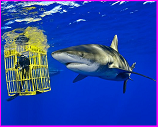 Students in grades 2 to 5 are introduced to the dangerous work of scientists who study great white sharks. They work in engineering teams to select appropriate materials from a makers pace to design a shark cage that will help a diver submerge safely into a tank of sharks.
Students in grades 2 to 5 are introduced to the dangerous work of scientists who study great white sharks. They work in engineering teams to select appropriate materials from a makers pace to design a shark cage that will help a diver submerge safely into a tank of sharks.
Photo from U.S. Fish and Wildlife Service
Read More
Filed under: Class Activities, Grades K-5, Lesson Plans | Comments Off on Diving into the Maker Space – with Sharks!
Tags: Class Activities, diving cage, Grades K-5, Maker Space, ORISE Oak Ridge Institution for Science and Education, Shark
Posted on July 8th, 2019 by Mary Lord
 Students in grades 6 to 8 use water balloons and string to understand how the force of gravity between two objects and the velocity of a spacecraft can balance to form an orbit. They see that when the velocity becomes too great for gravity to hold the spacecraft in orbit, the object escapes the orbit and travels further away from the planet.
Students in grades 6 to 8 use water balloons and string to understand how the force of gravity between two objects and the velocity of a spacecraft can balance to form an orbit. They see that when the velocity becomes too great for gravity to hold the spacecraft in orbit, the object escapes the orbit and travels further away from the planet.
Read More
Filed under: Class Activities, Grades 6-8, Lesson Plans | Comments Off on The Great Gravity Escape
Tags: aeronautical engineering, Class Activities, forces and motion, Grades 6-8, Gravity, orbit, Physics, spacecraft, teachengineering, velocity, water balloons
Posted on May 20th, 2019 by Mary Lord
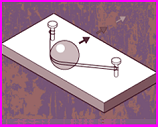 Students in grades 4 to 9 learn about projectile motion by designing, building, and testing a machine that can kick a Ping-Pong ball into a cup lying on its side 12 inches away.
Students in grades 4 to 9 learn about projectile motion by designing, building, and testing a machine that can kick a Ping-Pong ball into a cup lying on its side 12 inches away.
Read More
Filed under: Class Activities, Grades 6-8, Grades 9-12, Grades K-5, Lesson Plans | Comments Off on Build a Kicking Machine
Tags: ball, Class Activities, Engineering Design, forces and motion, Grades 6-8, Grades K-5, Kicking Machine, kinetic energy, Lesson Plan, PBS Design Squad, Physics, projectile motion, simple machines, soccer
Posted on May 9th, 2019 by Mary Lord
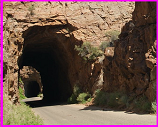 Students in grades 6 to 8 apply their knowledge about mountains and rocks to transportation engineering to develop a model mountain tunnel from that simulates the principles behind real-life engineering design. Teams design and create model tunnels through a clay mountain, working within design constraints and testing for success; the tunnels must meet specific design requirements and withstand a certain load.
Students in grades 6 to 8 apply their knowledge about mountains and rocks to transportation engineering to develop a model mountain tunnel from that simulates the principles behind real-life engineering design. Teams design and create model tunnels through a clay mountain, working within design constraints and testing for success; the tunnels must meet specific design requirements and withstand a certain load.
Read More
Filed under: Class Activities, Grades 6-8, Lesson Plans | Comments Off on Tunnel Through!
Tags: civil and environmental engineering, Class Activities, Grades 6-8, Lesson Plan, railroad, Transportation, tunnel
Posted on May 9th, 2019 by Mary Lord
 The driving of the last spike of the Transcontinental Railroad on May 10, 1863, capped more than a century of engineering triumph and human tragedy. Teach your students about the historical impact of engineering and technology on society with these activities and resources designed to mark the anniversary of that fateful meeting of two steam locomotives at Promontory, Utah, 150 years ago.
The driving of the last spike of the Transcontinental Railroad on May 10, 1863, capped more than a century of engineering triumph and human tragedy. Teach your students about the historical impact of engineering and technology on society with these activities and resources designed to mark the anniversary of that fateful meeting of two steam locomotives at Promontory, Utah, 150 years ago.
Read More
Filed under: Lesson Plans, Special Features, Web Resources | Comments Off on Transcontinental Railroad Turns 150
Tags: Civil Engineering, Class Activities, Golden spike 150th transcontinental railway, History, Internet Resources, Lesson Plan, Resources for Teachers, tracks, train, tunnels, Web Resources
Posted on May 3rd, 2019 by Mary Lord
 Students in grades 4 to 8 or higher learn the basics of electricity and sound by designing and building a working telegraph system using batteries, wire, and other simple parts. They then use their telegraphs – one of history’s most important inventions – to send and receive messages.
Students in grades 4 to 8 or higher learn the basics of electricity and sound by designing and building a working telegraph system using batteries, wire, and other simple parts. They then use their telegraphs – one of history’s most important inventions – to send and receive messages.
Read More
Filed under: Class Activities, Grades 6-8, Grades 9-12, Lesson Plans | Comments Off on Build a Telegraph Tapper
Tags: Class Activities, electricity, Energy, Golden spike transcontinental railroad, History, Lesson Plan, Morse code, sound, telecommunications, telegraph, train
Posted on March 28th, 2019 by Mary Lord
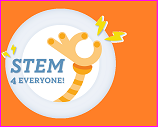 TeachEngineering, the digital library of hands-on curriculum curated by the University of Colorado, Boulder’s College of Engineering, has added several new features to help STEM teachers integrate authentic engineering activities into their physics or math classes – or simply introduce concepts that engineers use on the job in fields from aerospace to software development.
TeachEngineering, the digital library of hands-on curriculum curated by the University of Colorado, Boulder’s College of Engineering, has added several new features to help STEM teachers integrate authentic engineering activities into their physics or math classes – or simply introduce concepts that engineers use on the job in fields from aerospace to software development.
Read More
Filed under: For Teachers, K-12 Outreach Programs, Lesson Plans, Special Features | Comments Off on Engineering is Everywhere!
Tags: career awareness, Curriculum, Engineering, integrated STEM, Internet Resources, Mathematics, Physics, STEM education, TeachEngineerig, Videos, Web Resources
 Elementary students learn about wind and kinetic and renewable energy while following the steps of the engineering design process to imagine, create, test, evaluate, and refine small, wind-powered sail cars built from limited quantities of drinking straws, masking tape, paper, and beads. Teams of two then compete to see which sail-car travels the farthest when pushed by the wind (simulated by the use of an electric fan).
Elementary students learn about wind and kinetic and renewable energy while following the steps of the engineering design process to imagine, create, test, evaluate, and refine small, wind-powered sail cars built from limited quantities of drinking straws, masking tape, paper, and beads. Teams of two then compete to see which sail-car travels the farthest when pushed by the wind (simulated by the use of an electric fan).








 Middle school students take on the role of marine biologists to investigate how sharks move in three-dimensional space (3-D). Understanding the mathematics behind shark movement will inform the design of a prototype joystick for a robotic exploration shark used to collect oceanic data.
Middle school students take on the role of marine biologists to investigate how sharks move in three-dimensional space (3-D). Understanding the mathematics behind shark movement will inform the design of a prototype joystick for a robotic exploration shark used to collect oceanic data. Students in grades 2 to 5 are introduced to the dangerous work of scientists who study great white sharks. They work in engineering teams to select appropriate materials from a makers pace to design a shark cage that will help a diver submerge safely into a tank of sharks.
Students in grades 2 to 5 are introduced to the dangerous work of scientists who study great white sharks. They work in engineering teams to select appropriate materials from a makers pace to design a shark cage that will help a diver submerge safely into a tank of sharks. Students in grades 6 to 8 use water balloons and string to understand how the force of gravity between two objects and the velocity of a spacecraft can balance to form an orbit. They see that when the velocity becomes too great for gravity to hold the spacecraft in orbit, the object escapes the orbit and travels further away from the planet.
Students in grades 6 to 8 use water balloons and string to understand how the force of gravity between two objects and the velocity of a spacecraft can balance to form an orbit. They see that when the velocity becomes too great for gravity to hold the spacecraft in orbit, the object escapes the orbit and travels further away from the planet. Students in grades 4 to 9 learn about projectile motion by designing, building, and testing a machine that can kick a Ping-Pong ball into a cup lying on its side 12 inches away.
Students in grades 4 to 9 learn about projectile motion by designing, building, and testing a machine that can kick a Ping-Pong ball into a cup lying on its side 12 inches away. Students in grades 6 to 8 apply their knowledge about mountains and rocks to transportation engineering to develop a model mountain tunnel from that simulates the principles behind real-life engineering design. Teams design and create model tunnels through a clay mountain, working within design constraints and testing for success; the tunnels must meet specific design requirements and withstand a certain load.
Students in grades 6 to 8 apply their knowledge about mountains and rocks to transportation engineering to develop a model mountain tunnel from that simulates the principles behind real-life engineering design. Teams design and create model tunnels through a clay mountain, working within design constraints and testing for success; the tunnels must meet specific design requirements and withstand a certain load. The driving of the last spike of the Transcontinental Railroad on May 10, 1863, capped more than a century of engineering triumph and human tragedy. Teach your students about the historical impact of engineering and technology on society with these activities and resources designed to mark the anniversary of that fateful meeting of two steam locomotives at Promontory, Utah, 150 years ago.
The driving of the last spike of the Transcontinental Railroad on May 10, 1863, capped more than a century of engineering triumph and human tragedy. Teach your students about the historical impact of engineering and technology on society with these activities and resources designed to mark the anniversary of that fateful meeting of two steam locomotives at Promontory, Utah, 150 years ago. Students in grades 4 to 8 or higher learn the basics of electricity and sound by designing and building a working telegraph system using batteries, wire, and other simple parts. They then use their telegraphs – one of history’s most important inventions – to send and receive messages.
Students in grades 4 to 8 or higher learn the basics of electricity and sound by designing and building a working telegraph system using batteries, wire, and other simple parts. They then use their telegraphs – one of history’s most important inventions – to send and receive messages. TeachEngineering, the digital library of hands-on curriculum curated by the University of Colorado, Boulder’s College of Engineering, has added several new features to help STEM teachers integrate authentic engineering activities into their physics or math classes – or simply introduce concepts that engineers use on the job in fields from aerospace to software development.
TeachEngineering, the digital library of hands-on curriculum curated by the University of Colorado, Boulder’s College of Engineering, has added several new features to help STEM teachers integrate authentic engineering activities into their physics or math classes – or simply introduce concepts that engineers use on the job in fields from aerospace to software development.